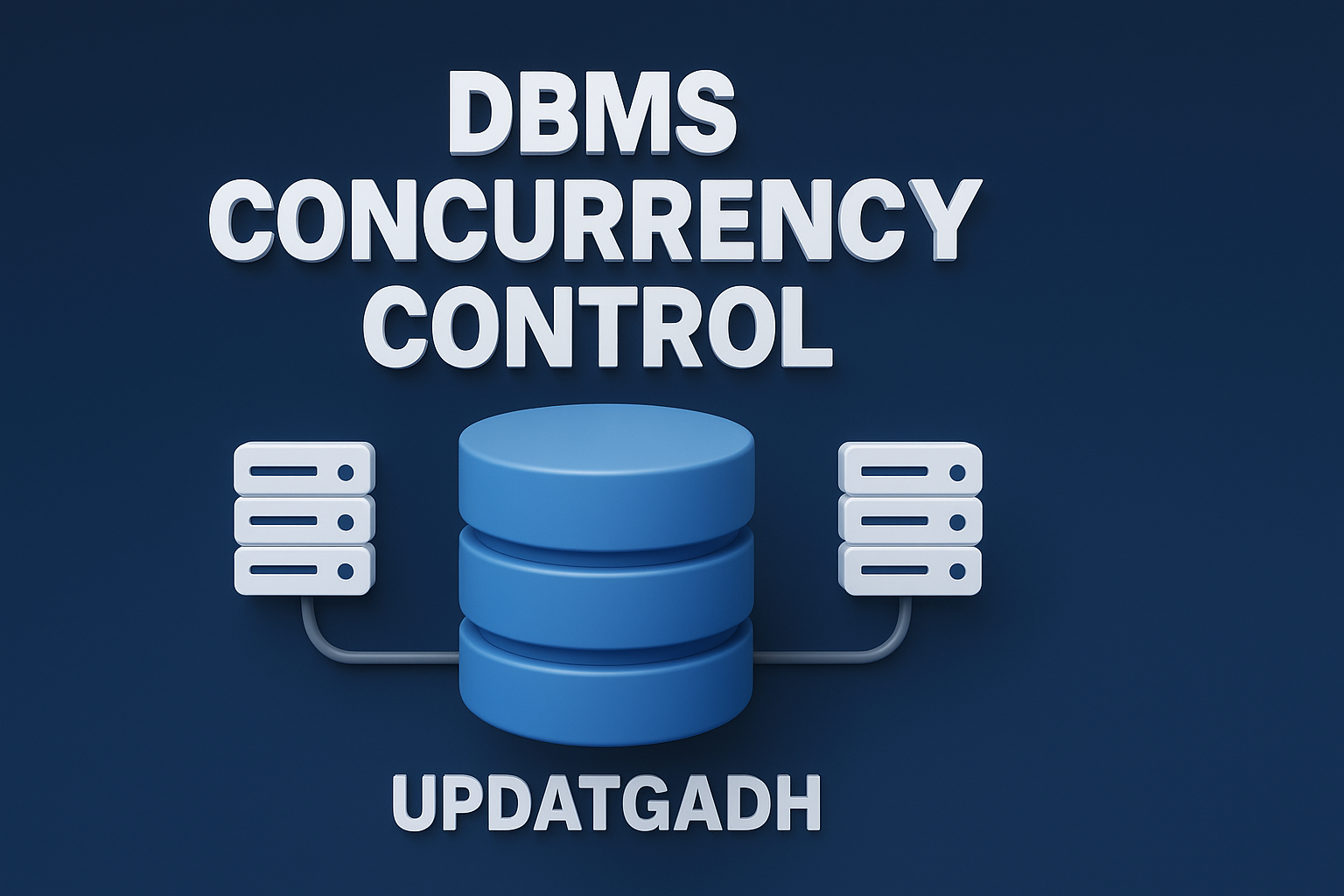
Role of SQL in Data Science | UpdateGadh
Role of SQL in Data Science
SQL (Structured Query Language) is a fundamental building block in the world of data science. As it allows data scientists to manage, retrieve, and manipulate data stored in relational databases, SQL becomes an irreplaceable tool in their toolkit.
In this in-depth guide by UpdateGadh, we’ll dive into the core aspects of why SQL remains crucial in data science workflows:
Complete Python Course with Advance topics:-Click Here
SQL Tutorial :-Click Here
Data Science Tutorial:-Click Here
Introduction to SQL
Relational databases are managed and queried using SQL, a domain-specific language. It provides a standardized way of communicating with databases and has long been a backbone of structured data management. From small startups to global enterprises, SQL is the language that powers efficient and effective data handling.
Data Collection and Storage
At the heart of any data science project lies data collection and storage. Organizations gather data from various sources—web applications, sensors, social platforms, internal systems, and more. SQL plays a vital role here by offering a robust method to create, structure, and manage databases.
Popular database management systems like MySQL, PostgreSQL, SQL Server, and Oracle heavily rely on SQL, allowing data scientists to define tables, specify relationships, and maintain the integrity of their datasets.
Data Retrieval and Querying
Once data is collected and organized, the next step is retrieval for analysis. SQL’s querying capabilities are unmatched in this area. Data scientists use SQL queries to filter, join, and retrieve specific slices of data needed for deep analysis.
For example, here’s a simple SQL query from an e-commerce database:
SELECT customer_name, order_date, product_name, price
FROM customers
JOIN orders ON customers.customer_id = orders.customer_id
JOIN order_details ON orders.order_id = order_details.order_id
JOIN products ON order_details.product_id = products.product_id
WHERE order_date >= '2023-01-01';
This query pulls customer names, order dates, product names, and prices for orders placed after January 1, 2023.
Data Cleaning and Transformation
Real-world data is messy—duplicates, missing values, inconsistent formats are all common issues. SQL empowers data scientists to perform crucial cleaning and transformation operations:
- Removing null values
- Fixing duplicates
- Altering data types
Commands like UPDATE, DELETE, and INSERT are used to ensure that the data is prepared properly for further analysis.
Data Aggregation and Summarization
Aggregating and summarizing data is essential for deriving actionable insights. SQL functions like SUM, AVG, COUNT, and GROUP BY make this process seamless.
For instance, calculating the total sales revenue per region or the average customer age by city can be easily accomplished with simple SQL queries.
Exploratory Data Analysis (EDA)
Exploratory Data Analysis is where data scientists uncover patterns, spot anomalies, and test hypotheses. SQL enables fast, efficient querying, filtering, and summarizing—helping data professionals quickly make sense of large datasets during the EDA phase.
Feature Engineering
Better features often lead to better machine learning models. SQL helps data scientists with feature engineering by enabling them to:
- Merge datasets
- Create calculated fields
- Generate aggregated statistics like customer lifetime value or purchase frequency
These engineered features can then directly feed into modeling processes.
Model Training Data Preparation
Preparing datasets for model training often requires creating balanced datasets, sampling records, or splitting data into training and testing sets. SQL can handle these preprocessing tasks efficiently, ensuring that machine learning models are built on quality data.
Integration with Programming Languages
SQL doesn’t operate in isolation. It integrates smoothly with popular programming languages like Python, R, and Java. Using libraries like SQLAlchemy (Python) or dplyr (R), data scientists can harness the power of SQL within their analysis and modeling pipelines.
This synergy helps streamline workflows—SQL handles data retrieval and manipulation, while Python or R manage analysis and model building.
Database Optimization
Working with massive datasets demands efficiency. SQL offers several techniques to optimize database performance:
- Indexing tables
- Writing efficient queries
- Finding and addressing bottlenecks in SQL execution plans
By mastering these techniques, data scientists can handle large volumes of data with ease.
Data Visualization
The first step in comprehending data is to visualise it before modelling. SQL is often used to prepare datasets that are then visualized using tools like Tableau, Power BI, Matplotlib, or Seaborn. Aggregated and structured data retrieved via SQL becomes the foundation for meaningful, insightful visualizations.
Scalability and Big Data
In today’s big data era, SQL has evolved. Distributed systems like Apache Hive and Apache Spark SQL allow SQL-like querying across massive datasets. Data scientists can apply their existing SQL skills in big data ecosystems without steep learning curves.
Security and Data Privacy
SQL provides robust tools for maintaining data security:
- Role-based access controls
- Data encryption
- Auditing and logging features
With regulations like GDPR and HIPAA in place, data scientists must use SQL responsibly to ensure data privacy and compliance.
Collaboration and Documentation
Clear, well-documented SQL scripts are essential for collaborative projects. Proper documentation ensures:
- Reproducibility of analysis
- Easier onboarding for new team members
- Transparency in data processing workflows
Using version control systems like Git further enhances collaboration on SQL projects.
Monitoring and Maintenance
SQL automates many aspects of database maintenance. Scheduled queries can be set up to monitor data quality, track ETL pipeline health, and generate alerts if anomalies are detected—ensuring high data reliability over time.
Model Deployment and Integration
When moving machine learning models to production, integration with databases is crucial. SQL enables:
- Creating stored procedures for model execution
- Fetching live data for predictions
- Logging model outputs into databases
This seamless integration ensures that machine learning models deliver real business value.
Version Control and Collaboration
SQL scripts, just like any code, can and should be version controlled using Git. This makes it easy to:
- Track changes
- Collaborate on queries and database schema
- Maintain a history of database modifications
Data Governance
Data governance practices are key in any data-driven organization. SQL supports:
- Enforcing data retention policies
- Tracking data lineage
- Managing access to sensitive data
SQL helps build a strong, compliant data governance framework.
Real-time Data Analysis
With technologies like Apache Kafka and Apache Flink, SQL can be applied to real-time streaming data. Data scientists can use SQL queries to monitor, analyze, and react to data as it flows in—supporting real-time decision-making.
Challenges and Limitations
Despite its power, SQL has limitations:
- It’s best suited for structured data, not unstructured formats like text or images.
- Complex SQL queries can sometimes become difficult to maintain or optimize.
- Scaling relational databases horizontally can be complex compared to NoSQL solutions.
Thus, SQL is often combined with other tools in modern data science projects.
Advantages of SQL in Data Science
- Data Manipulation and Retrieval: Highly efficient for structured datasets.
- Data Cleaning: Powerful operations to clean and prepare data.
- Data Integration: Combine data from several sources in a seamless manner.
- Query Optimization: Indexing and optimization lead to faster performance.
- Scalability: Large quantities of data can be handled by modern databases.
- Security: Built-in encryption and access control mechanisms.
- Historical Data Analysis: Great for trend analysis over time.
- Advanced Analytics: Easy integration with Python, R for statistical and machine learning tasks.
- Data Consistency: Data integrity regulations are enforced by relational databases.
Disadvantages of SQL in Data Science
- Structured Data Focus: Not ideal for unstructured data like videos or images.
- Learning Curve: Beginners may find mastering SQL syntax and optimization challenging.
- Performance Issues: Poorly written queries can slow down analysis.
- Horizontal Scalability: Scaling SQL databases can be expensive and complex compared to NoSQL alternatives.
Download New Real Time Projects :-Click here
Complete Advance AI topics:- CLICK HERE
Conclusion
SQL is still a crucial component of the data science methodology. SQL is deeply ingrained in every step of the process, from data collection to cleaning, exploration, feature engineering, and deployment.
At UpdateGadh, we believe that mastering SQL is not optional—it’s a must for any aspiring or experienced data scientist. Whether you’re preparing datasets for machine learning, building dashboards, or ensuring data integrity, SQL skills will empower you to manage data-driven challenges with confidence and efficiency.
So if you are stepping into the world of data science, make SQL one of your top priorities. The journey might start with a few queries, but it leads to powerful insights, smarter decisions, and a stronger career ahead.
role of sql in data science pdf
sql for data analysis w3schools
sql for data science interview questions
sql for data science free course with certificate
role of sql in data science udemy
role of sql in data science geeksforgeeks
what is sql
role of sql in data science coursera
role of sql in data science pdf
role of sql in data science geeksforgeeks
role of sql in data science
is sql important for role of sql in data science
what is role of sql in data science
is sql used in data science
importance of role of sql in data science
data science sql jobs
what is the role of sql in data science manager
what is sql used role of sql in data science
role of sql in data science
role of sql in data science in big data
role of sql in data science data analytics
data science sql
role of sql in data science and how they interact
what is the role of sql in data science









Post Comment